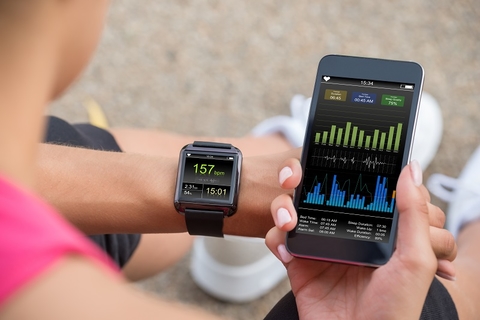Sensors are now serving a wide variety of specialized internet of things (IoT) functions, with medical patient monitoring among the most challenging. In operation, we’re looking at a variety of human body indicators, and using sensors and algorithms to decipher what they tell us.
There’s a distinction, notes Ian Chen, head of the sensor division at Maxim Integrated Products, between sensors that provide some kind of “measurement, and those optimized for “monitoring.” In the first case, the sensors highlight one-time or otherwise infrequent patient responses. The “monitoring” activity, on the other hand, attempts to detect long-term patient conditions and variations. This provides a need to choose among sensor types. Measurement devices need to have high sensitivity, wide dynamic range and a fast response to one-shot stimulus.
Monitoring devices register longitudinal changes in a patient’s health profile. These sensors may not need a fast response to stimulus, but, for a broad sampling, low power consumption is a strong requirement.
Increasingly, optical sensors are used to visualize ordinarily invisible body processes like blood pressure and heart rate. By itself, heart rate monitoring (HR) doesn’t tell you very much, insists Chen, a featured speaker at June’s Sensors Expo. The rhythmic expansion and contraction of the blood vessels, might serve as an indicant of patient stress, he says. But it’s undoubtedly a combination of measurements that tell clinicians what’s going on with a patient.
Optical biosensors for mobile and wearable applications enable a variety of measurements. In operation of the optical sensor — a Photo Plethysmo-Graphy (PPG) — uses optical techniques to detect volumetric changes in blood in peripheral circulation. Here, clinicians are looking at color changes (promoted by absorption and/or scattering) visible on the skin. These changes in the optical path include frequency shifts in red, green, and blue color spectrum, as well as Infrared (IR). The light intensity changes over time, and these shifts are interpreted as pulse rates, HR and/or blood oxygen saturation levels (SpO2). Pulse oximetry ln fact is now among the most common ways of measuring oxygen saturation level.

Measurement of changes in the blood volume occur in synch with the cardiac rhythms. On each cycle, light travels through biological tissues it is absorbed by bones and/or skin. The patients’ skin will glow (i.e., appear flushed in response to both venous and arterial blood flow. The PPG will highlight the blood flow changes. What it tells you depends of the wavelength (colors) of the dispersed light.
The camera built into an iPhone 7 can retrieve a blood pressure measurement simply by snapping a video of a patient’s face, and graphing the color changes observed. But this is “gimmick” observes Ian Chen. The patient must be still to get a good reading with the camera phone measurements. A HR or blood oxygen level reading could detect cardiac peaks and valleys, reading PPG peaks (“systolic peak”) and troughs (tnext). Maxim is developing sensors for these specific measurements.
_____________________________
At Sensors Expo 2018 in San Jose, CA, demonstrations of optical and other sensors in a plethora of applications ranging from medical to industrial will be plentiful beyond compute. However, to take advantage of this veritable feast of knowledge and learning, you must register for Sensors Expo & Conference and/or Medical Sensors Design Conference. Once you do that, you can attend Ian Chen’s session, “Emerging Healthcare Applications for Optical Biosensing”, on Wednesday, June 27, 2018 at 1:30 PM.
Optical sensors represent the most common type of biosensor and prove to be more accurate at low power. This session provides technical background on how optical techniques improve everyday life and how they are used for bioanalytical applications. It discusses the common noise and error sources affecting optical sensors in mobile and wearable applications, including the effects of confounders from the environment captured in the measurement and the physiological variations among the user population.
Attendees receive an overview on using reflectometry for a pulse plethysmograph (PPG) waveform and details about the physical and physiological principals at work. They also learn about current capabilities of wearable biosensors and the future direction of optical biosensing applications.
Ian Chen, Executive Director of Industrial & Healthcare, Maxim Integrated
Ian Chen joined Maxim Integrated in 2017 as Executive Director for Industrial and IoT Sensors. He has 25+ years of semiconductor experience, 10 years focused on sensors. He held senior business, marketing and engineering leadership positions at both startups and multi-national corporations where he developed a track record of identifying emerging opportunities early and executing to capture them. He was identified by EE Times as one of the “Top 40 technologists to watch” and holds over 20 patents. Ian received Bachelor and Master degrees in electrical engineering, as well as an MBA, from the University of Illinois at Urbana-Champaign.